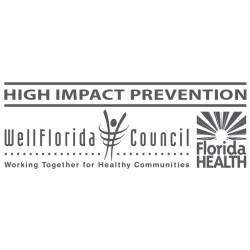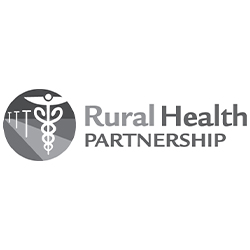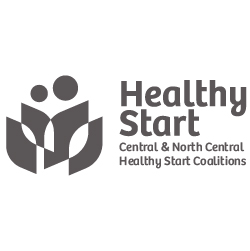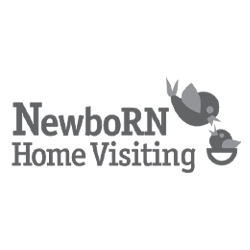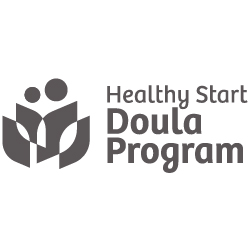Transforming veterans’ care in rural practices using health IT
White House Rural Council Blog
Posted by Leila Samy and Gina Capra
A 65-year-old veteran living in a rural community presents at his local Critical Access Hospital (CAH) with symptoms of pneumonia. After evaluating the patient, the physician discharges him with a prescription for antibiotics. What the physician doesn’t know is that his US Department of Veterans Affairs (VA) providers had prescribed warfarin (a blood thinner) to help prevent harmful blood clots that may cause a stroke. Yet certain antibiotics, when combined with warfarin, can lead to an adverse drug reaction that could include bleeding or interfere with the protection the anticoagulant (blood thinner) provides, which could lead to a stroke.
Following the lead of the White House Rural Council, we in the US Department of Health and Human Services (HHS) and the VA are working with our public and private partners to ensure rural providers and the communities they serve have health IT tools to help them avoid scenarios like this one.
Nearly 70% of veterans get health care services at both VA and non-VA clinics and hospitals. The percentage is higher among those veterans who live in rural and frontier areas of the country. In a recent evaluation of the VA Blue Button program conducted by Dr. Carolyn Turvey of the Iowa VA medical center, 52.5% of participants reported they carry information from one provider to another; about 13% indicated their providers use phone, mail or fax; 15% indicated that they do not know how their providers communicate between one another, and 15% reported their providers do not communicate at all. Currently there is no systematic and streamlined way for VA and non-VA health providers to exchange the patients’ health information to coordinate or co-manage care. One solution is to empower patients to initiate electronic transfer of their health information between their health care providers. That’s where our joint work comes in.
White House Rural Council Initiatives
In 2012, White House Rural Council partners from HHS and VA signed a Memorandum of Understanding (MOU) to use telehealth and health information exchange to improve care quality and coordination for rural veterans. In 2013, ONC, the Office of Rural Health Policy (ORHP) in the Health Resources and Services Administration (HRSA) and the VA rolled out a package of projects and programs in accordance with this MOU, including:
1. The Veteran Initiated Electronic Care Coordination (VIECC) project: this program leverages health IT to improve care coordination and quality for veterans who live in rural areas and seek care both within the VHA system and their local, rural clinic or hospital.
2. The Flex Rural Veterans Health Access Program: HHS awarded $900,000 to use telehealth and health information exchange to serve rural veterans. The grants went to the three states with the highest percentage of Iraq War Veterans.
Veteran Initiated Electronic Care Coordination Project
The VIECC helps rural Veterans access their health information stored in the VA’s personal health portal, My HealtheVet. Veterans are trained to use Blue Button technology to generate care coordination documents with key pieces of information (e.g., medication lists, laboratory results, procedures and diagnoses) in formats that are both machine and human readable. By the end of 2013, we had launched pilot projects in ten communities across four states: Iowa, Florida, Nebraska and Minnesota.
From each of the four states, VA project personnel, led by Dr. Turvey, Ph.D., and Dawn Klein, M.S.W., also from the Iowa City VA Health Care System, are collaborating with HHS grantees (e.g., ONC’s Regional Extension Centers and ORHP’s Rural Health IT Network Development Grantees) and non-VA rural health care community partners to not only conduct the patient trainings, but also to:
1) Educate and Engage Veterans: Veterans received customized training and education for participating on why and how to electronically access and transmit their health information as well as dedicated one-on-one support to make sure that veterans successfully use Blue Button technology to gain electronic access to their health information.
2) Train Providers: Non-VA providers received customized training and technical assistance, including workflow redesign and how to collect health information generated from My HealtheVet. This incorporates data into non-VA EHRs so it can be used where the patient goes for care.
3) Evaluate the Outcome of the Pilot: We will determine whether non-VA providers used the health information they received and evaluate the project’s impact on:
1. Quality: Medication management
2. Efficiency: Likelihood of non-VA providers ordering duplicate laboratory tests and
3. Satisfaction: Patient and non-VA provider satisfaction with the project and the ability to access and use the care coordination documents.
Education is key
A 70-year-old veteran living in a rural community made the 70-minute commute to his VA provider for his annual health visit and lab work. One week later, he develops symptoms of abdominal pain and blood in the urine. The veteran’s symptoms are too acute for the arduous commute to the VA provider, plus he wants to be treated by his local family practice doctor. Without access to the results of the recent lab work stored in My HealtheVet, his doctor may be more likely to delay important care decisions while the duplicate labs and tests necessary for an accurate diagnosis are run.
If this veteran were enrolled in one of our pilots, local partners would offer one-on-one training on how and why he should electronically access and transmit his health information. They might also offer him one-on-one support to make sure he successfully uses Blue Button to access health information housed through My HealtheVet. If his physician participated in one of our pilot programs, he, too, would have received training and in-person technical assistance to help him use these electronic tools to better coordinate his patient’s care.
“One important lesson we’ve learned from these experiences is the importance of teaching Veterans how to use the VA Blue Button as a way that they can share their VA information with all their care providers. That’s why we developed step-by-step training materials that walk veterans through how to produce their care coordination documents,” said Dawn Klein. (For more, see this training video used with Veterans in Iowa on how to access and share their health information with non-VA providers: http://www.ruralhealth.va.gov/media/bluebutton/story.swf).
According to Dr. Turvey, “Patient adoption of technologies that provide access to their health record is different from adoption of other consumer-friendly technologies, such as online banking or smartphones. Most consumers already had many years of experience managing their bank account or using a phone, so learning how to perform familiar tasks on an electronic device was much more intuitive. In contrast, patient experience in managing their health record varies greatly from individual to individual and many health care consumers do not have vast experience with functions such as looking up laboratory results, entering over-the-counter medications to their complete medication list, or health information exchange between two providers. Therefore, patients may need initial education and training to help them make meaningful use of their personal health records.”
For more information about White House Rural Council’s rural Health IT initiatives, see ONC’s joint blog posting with the Office of Rural Health Policy providing an overview of our partnership and accomplishments since 2010: http://www.healthit.gov/buzz-blog/rural-health/onc-orhp-rural-health/
This is part of a series of blog posts about a White House Rural Council Initiative to 1) empower rural veterans to access and use their electronic health information and 2) help rural health care providers leverage health IT and transform their care delivery to fit the needs of rural Veterans. To follow the conversation on Twitter, look for #RuralHealth and #patientengagement hashtags.
Leila Samy is the Rural Health IT Coordinator at the Office of the National Coordinator for Health Information Technology. Gina Capra is the Director of the Office of Rural Health at the Department of Veterans Affairs.
Note: CommunityHealth IT and NF/SG VA Health System project on WhiteHouse.gov website. Along with Meridian Behavioral Health Center, Palms Medical Group, and other MyHealthStory-participating facilities, we are the Florida team for the Veteran Initiated Electronic Care Coordination (VIECC) Project– getting Veteran data from MyHealtheVet to MyHealthStory to improve care coordination for Veterans.
Back to News page

